Linux BMR (ReaR)
Bacula4 has developed a new Linux BMR tool. This is more tightly integrated with our GUI and is based on the ReaR *nix server imaging technology.
This new Linux BMR replaces the legacy/original Linux BMR found HERE
For existing customers, using the legacy BMR, please enter your server wizard for each server, and do the following
1) select the new Linux BMR (ReaR)
2) save the wizard, ensuring you enter your SSH credentials (if you do not have an SSH key stored) so as to update the server side scripts and install/configure ReaR based BMR on your *nix server/VM
3) it is recommended, for now, that you leave the original BMR in place. In the near future, we will completely remove the legacy BMR
Thats it, you're ready to use ReaR Linux BMR
Bacula4 Supported OS versions
If your *nix version does not support automatic ReaR installation and configuration, there is a manual install option
http://relax-and-recover.org/documentation/installation
Typically, you just need to install it on your OS, no configuration is required, and our system will handle that once installed and you complete the wizard process, entering in your SSH credentials (again, only required if you have NOT enabled SSH key access to the Bacula4 system)
Users Guide
This new Linux BMR replaces the legacy/original Linux BMR found HERE
For existing customers, using the legacy BMR, please enter your server wizard for each server, and do the following
1) select the new Linux BMR (ReaR)
2) save the wizard, ensuring you enter your SSH credentials (if you do not have an SSH key stored) so as to update the server side scripts and install/configure ReaR based BMR on your *nix server/VM
3) it is recommended, for now, that you leave the original BMR in place. In the near future, we will completely remove the legacy BMR
Thats it, you're ready to use ReaR Linux BMR
Bacula4 Supported OS versions
- RHEL/CentOS/Couldlinux 5.x > v7.x
- Debian v7.x
- Ubuntu 12.x and 14.x
If your *nix version does not support automatic ReaR installation and configuration, there is a manual install option
http://relax-and-recover.org/documentation/installation
Typically, you just need to install it on your OS, no configuration is required, and our system will handle that once installed and you complete the wizard process, entering in your SSH credentials (again, only required if you have NOT enabled SSH key access to the Bacula4 system)
Users Guide
Bare Metal Restore (ReaR)
To activate Bare Metal Restore (ReaR) simple check it on backup wizard:
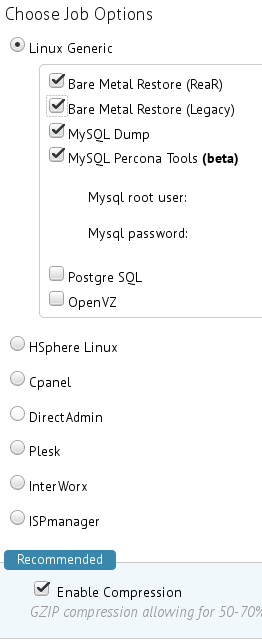

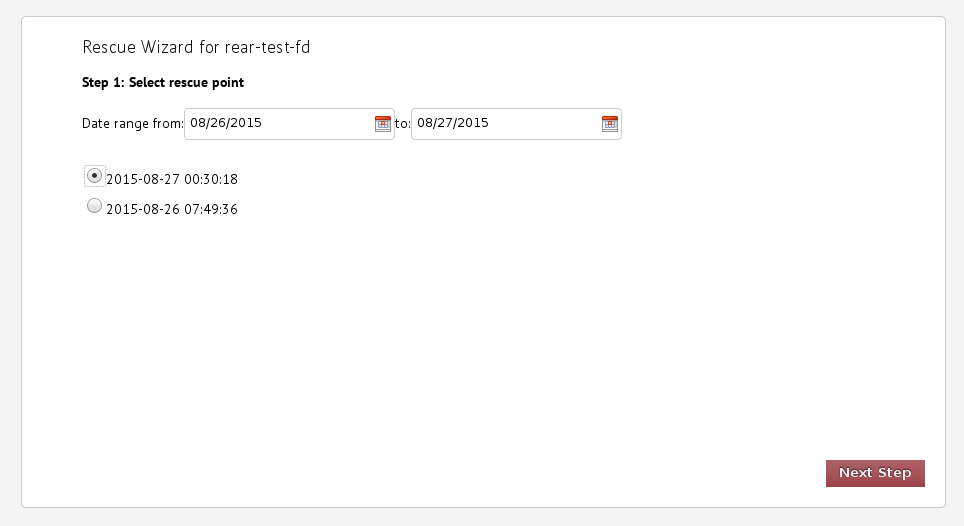

Burn the recovery image to CD/DVD or USB stick and boot server from it. Please note: Often times by default servers will try to boot from hdd - in which case, manually select "automatic recovery":
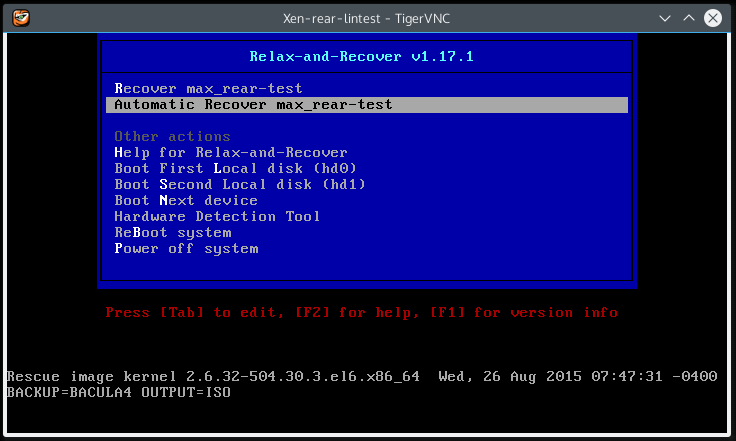
Important !!! The system will automatically reformat your disk and destroy all data (if there was any data present) in accordance with disk layout as it existed in the restore point you are restoring from.
Please wait for until you are prompted to return to the Bacula4 GUI:
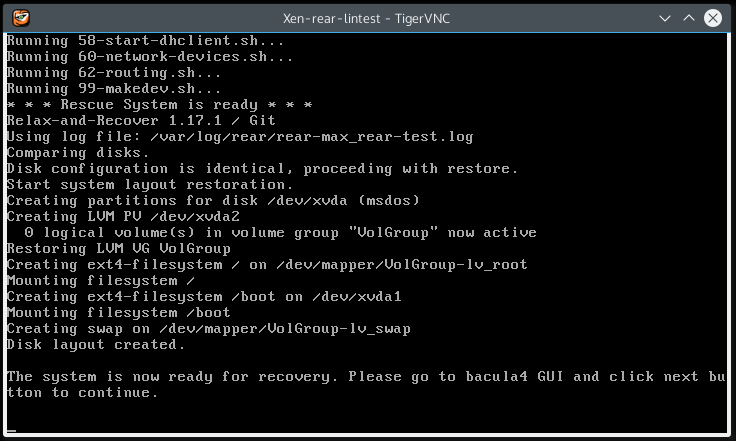
System checks connectivity and access to server and makes sure that it successfully booted from recovery media. Once you see green status, click next:

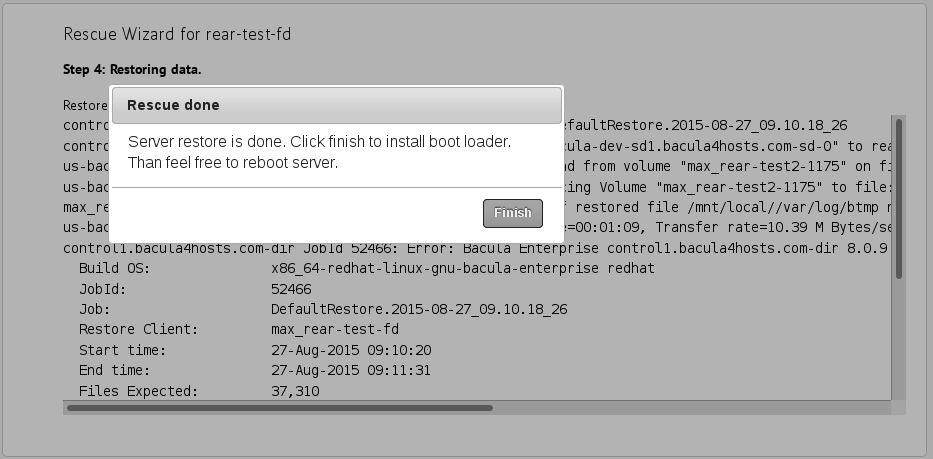
Within 15-30 seconds, boot loader is installed and server console prompts you to reboot server or check logs. Simply type "3" and press enter to boot the server.
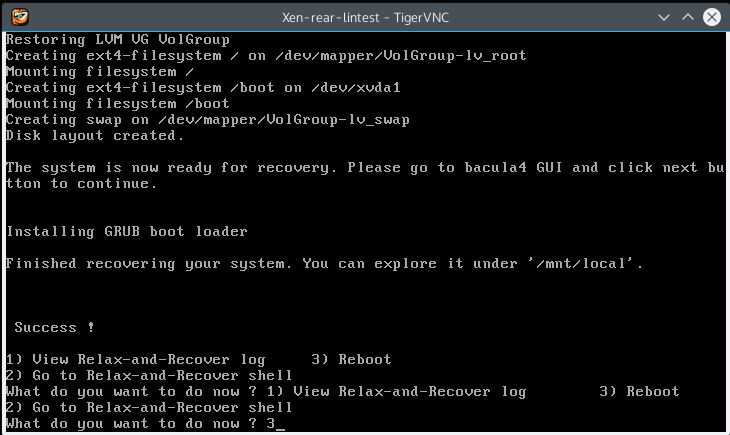
Example of MySQL Recovery from MySQL Dump Backup Method:
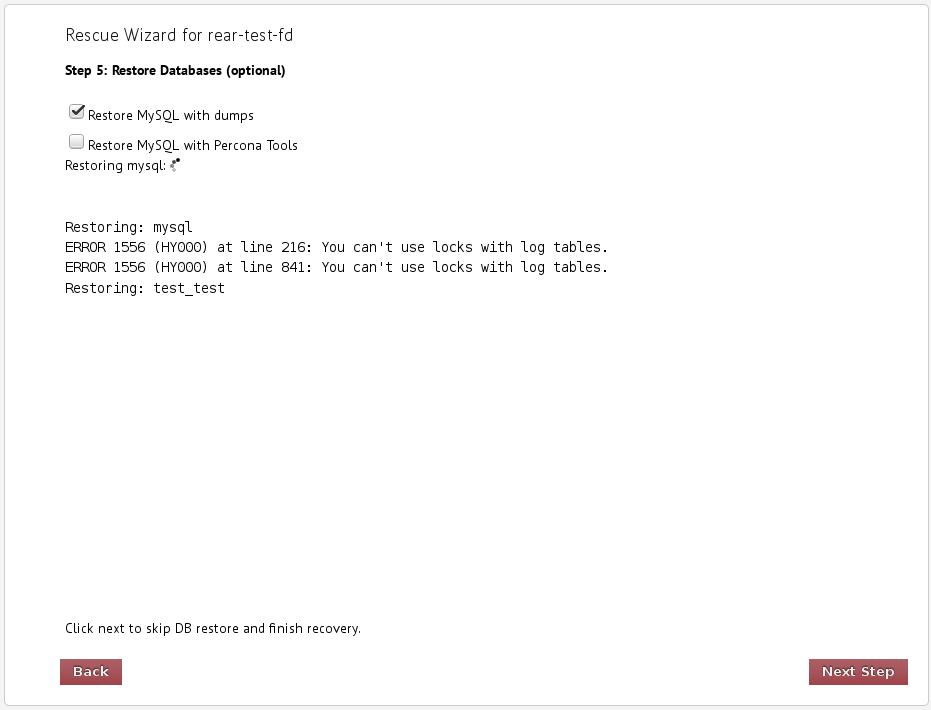
Example of MySQL Recovery from Percona MySQL Tools Backup Method:
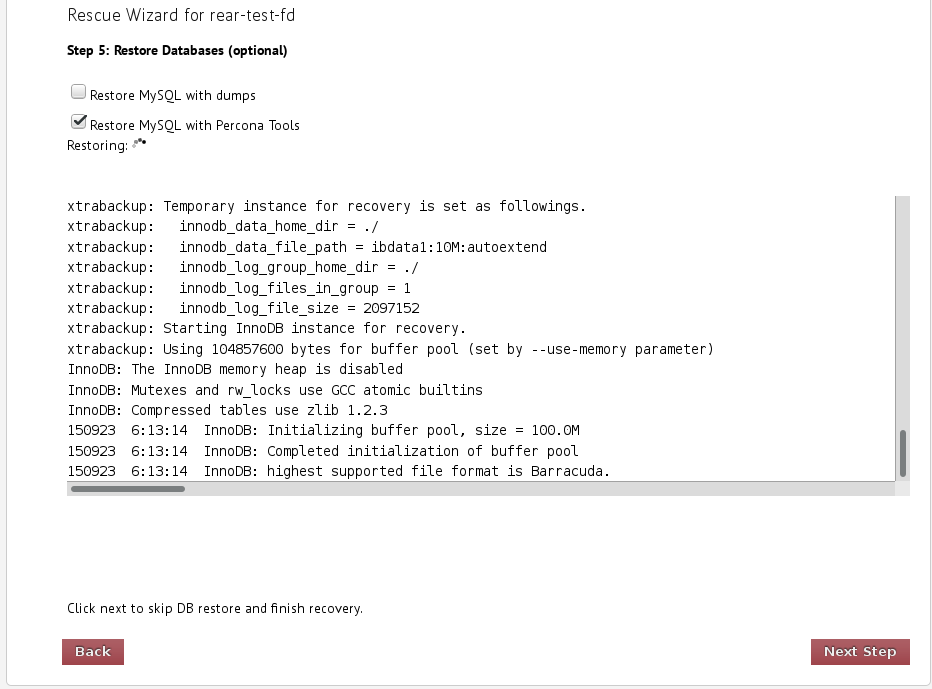
PLEASE NOT: Percona recovery only works with the default mysql data folder location as defined in /var/lib/mysql for other desired scenarios, you will need to restore mysql manually via regular recovery procedures.
Initiate a BMR
On server list simply click rear icon to start BMR Process:Browse and select rescue desired dates and restore point
Download rescue image and boot server in rescue mode
System checks access to storage device where the data from the selected restore point was stored. If ssh key is installed, it proceeds, If no SSH key was installed, it requests ssh credentials. Download link for rescue image is then provided:Burn the recovery image to CD/DVD or USB stick and boot server from it. Please note: Often times by default servers will try to boot from hdd - in which case, manually select "automatic recovery":
Important !!! The system will automatically reformat your disk and destroy all data (if there was any data present) in accordance with disk layout as it existed in the restore point you are restoring from.
Please wait for until you are prompted to return to the Bacula4 GUI:
System checks connectivity and access to server and makes sure that it successfully booted from recovery media. Once you see green status, click next:
Restore data
The system restores your servers files and data and displays the Bacula restore log. File size errors are safe to ignore and are automatically compensated for. When restore completes, you will be prompted to "finish":Within 15-30 seconds, boot loader is installed and server console prompts you to reboot server or check logs. Simply type "3" and press enter to boot the server.
Restore MySQL
If MySQL Backups are enabled on the server (MySQL Dump or Percona MySQL backups) you'll be prompted to restore MySQL. This step is optional and may not be required if you did not receive any errors in mysql data folder, its likely safe to skip this step (but can still be completed to absolutely ensure mysql data integrity)Example of MySQL Recovery from MySQL Dump Backup Method:
Example of MySQL Recovery from Percona MySQL Tools Backup Method:
PLEASE NOT: Percona recovery only works with the default mysql data folder location as defined in /var/lib/mysql for other desired scenarios, you will need to restore mysql manually via regular recovery procedures.
Related Articles
Linux BMR (ReaR)
Bare Metal Restore (ReaR) Bacula4 has developed a new Linux BMR tool. This is more tightly integrated with our GUI and is based on the ReaR *nix server imaging technology. To activate Bare Metal Restore (ReaR) simply enable it on the backup wizard: ...New Linux (ReaR) BMR announced
Hello today we are pleased to announce the launch of our new Linux (ReaR) BMR solution. With this new Linux BMR utility, we are able to support practically every flavour of *.nix systems, and have brought the BMR process into our GUI. A much more ...0KB ReaR BMR ISO Download (Linux)
This scenario only happens on SDs which were installed greater then a year ago. The older SD configurations do not play nice with the new ReaR Linux BMR - specifically with extracting the ISO's from the SDs when downloading, thus creating a 0KB iso ...0KB ReaR BMR ISO Download (Linux)
This scenario only happens on SDs which were installed greater then a year ago. The older SD configurations do not play nice with the new ReaR Linux BMR - specifically with extracting the ISO's from the SDs when downloading, thus creating a 0KB iso ...Linux Server Migration using ReaR BMR
You can use Bacula ReaR BMR to quickly, easily and safely perform server migrations. Step one: prepare server Prepare source server: Define new IP address: echo eth0 192.268.1.100/24 >/etc/rear/mappings/ip_addresses Define new route (optional - if ...